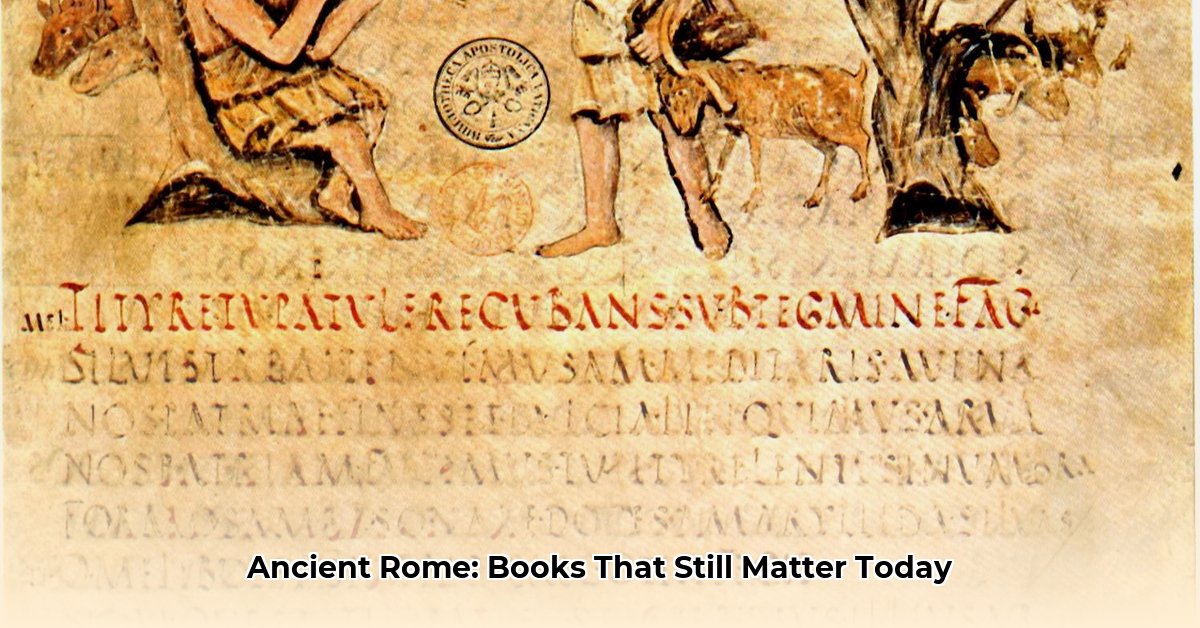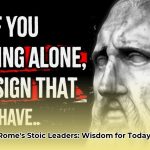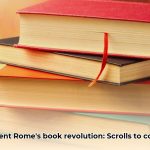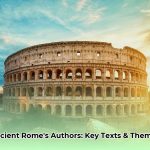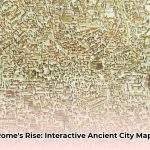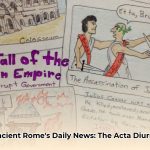Ancient Rome. The very phrase conjures images of powerful emperors, epic battles, and a civilization that undeniably shaped the foundations of our modern world. From its humble origins as a small Iron Age village to its sprawling empire, Rome’s story is one of innovation, ambition, and profound transformation. But for anyone eager to explore this captivating era, the sheer volume of available literature can be daunting. Where do you begin to unravel the complex tapestry of Roman politics, society, and culture? Perhaps a list of essential books can help.
This comprehensive guide cuts through the noise, offering a meticulously curated list of the absolute best books on Ancient Roman history. Whether you’re a curious beginner looking for an accessible entry point or a seasoned history enthusiast seeking deeper insights, we’ve identified the essential reads that illuminate Rome’s enduring legacy. Beyond merely listing titles, we’ll help you navigate the nuances of historical interpretation, understand the daily lives of its citizens, and explore the critical debates that continue to shape our understanding of this extraordinary civilization. Prepare for a fascinating journey through Rome’s past, revealing lessons that resonate with startling clarity in our present.
Laying the Foundation: Essential Comprehensive Overviews
To truly grasp the grandeur and complexities of Ancient Rome, it’s crucial to begin with works that provide a broad yet insightful overview. These foundational texts serve as your compass, guiding you through centuries of Roman development, from its mythical beginnings to the vastness of its imperial reach.
A quintessential starting point for any reader is Mary Beard’s SPQR: A History of Ancient Rome. Widely celebrated for its engaging narrative and fresh perspectives, SPQR challenges conventional wisdom while offering a comprehensive account of Roman history, from 753 BCE to 212 CE. Beard masterfully weaves together political intrigue, social dynamics, and cultural evolution, making the world of emperors, senators, gladiators, and ordinary citizens come alive. Her approach is both scholarly and remarkably accessible, making it a cornerstone for new enthusiasts and a re-evaluative read for experts.
For a more traditional, monumental perspective, Edward Gibbon’s The History of the Decline and Fall of the Roman Empire remains an unparalleled achievement, despite its age. Published in six volumes between 1776 and 1788, Gibbon’s magnum opus chronicles the Roman Empire’s decline from its height in the 2nd century CE to the fall of the Western Roman Empire in the 5th century CE, and even extends to the Byzantine Empire. While some of its conclusions have been debated and superseded by modern scholarship, Gibbon’s literary brilliance, meticulous research (for his era), and sweeping narrative make it an enduring classic that shaped the understanding of Rome for generations. It offers profound insights into the forces that can erode even the most powerful civilizations.
Power, Politics, and Personalities: Navigating Roman Leadership
The Roman Republic and Empire were defined by the colossal figures who wielded immense power, shaped political landscapes, and often dictated the fates of millions. Understanding the intricate web of alliances, rivalries, and ambitions among these leaders is key to unlocking the Roman story.
Dive into the dramatic twilight of the Roman Republic with Tom Holland’s Rubicon: The Last Years of the Roman Republic. Holland’s narrative is a tour de force, plunging readers into the tumultuous period leading up to and including Julius Caesar’s pivotal crossing of the Rubicon. With vivid prose and meticulous attention to detail, Holland brings to life the political machinations, civil wars, and charismatic personalities—including Caesar, Pompey, and Cicero—whose actions irrevocably transformed Rome from a republic into an empire. It’s a gripping account that reads like an epic thriller, making complex historical events remarkably accessible.
For a deeper, more academic exploration of this profound shift, Ronald Syme’s The Roman Revolution is indispensable. First published in 1939, this seminal work meticulously dissects the power struggles and profound constitutional changes that occurred during the transition from Republic to Empire under Augustus. Syme’s rigorous analysis reveals the social and political forces at play, detailing how Augustus consolidated power and established a new form of governance. While denser than popular histories, The Roman Revolution offers an unparalleled understanding of Roman political evolution and the mechanisms of power.
To gain direct insight into the lives of the emperors themselves, Suetonius’s The Twelve Caesars offers a fascinating, albeit often scandalous, glimpse. Written by the personal secretary of Emperor Hadrian, this ancient text provides biographies of Julius Caesar and the first eleven Roman emperors (from Augustus to Domitian). Suetonius details their public careers, private lives, vices, and virtues with an engaging, anecdotal style. While not a dispassionate historical analysis, it is an invaluable primary source, revealing contemporary perceptions and biases that illuminate the political climate and the psychology of power in Imperial Rome.
Beyond the Triumphs: Daily Life, Society, and Culture
While emperors and battles dominate many historical accounts, the true fabric of Roman civilization was woven by the lives of its ordinary citizens: their daily routines, social structures, and cultural values. Exploring these aspects provides a richer, more human understanding of Ancient Rome.
Jerome Carcopino’s Daily Life in Ancient Rome: The People and the City at the Height of the Empire is a classic that transports readers directly into the bustling streets and homes of Imperial Rome. Carcopino meticulously reconstructs the rhythms of Roman life, from waking hours and meals to public spectacles and social gatherings. He covers everything from housing and sanitation to education, religion, and the pervasive role of slavery. This vivid description allows readers to visualize what it was truly like to live in Rome, offering a grounded perspective often missing in political histories.
For a compelling look at the often-overlooked women who significantly influenced Imperial Rome, Guy de la Bédoyère’s Domina: The Women Who Made Imperial Rome is an essential read. This book brings to light the stories of powerful female figures, from the wives of Sulla and Julius Caesar to the infamous empresses Messalina and Agrippina the Younger. De la Bédoyère vividly paints a picture of their lives, their strategies for wielding power behind the scenes, and their impact on Roman history and social norms. Domina offers a vital counter-narrative, showing how women, despite patriarchal constraints, shaped the destiny of one of the world’s most powerful empires.
Further enriching our understanding of Roman culture and its enduring spirit is Edith Hamilton’s The Roman Way. Through biographical sketches of prominent figures—from military leaders to philosophers and poets—Hamilton captures the essence of Roman identity. She explores their values, their contributions to law and literature, and their unique resilience in the face of centuries of change. Hamilton’s work is celebrated for its ability to evoke the spirit of Rome in all its complexity and occasional contradictions, making it a timeless exploration of the civilization’s soul.
The Tides of Change: Decline, Fall, and Enduring Debates
The question of Rome’s decline and fall remains one of history’s most compelling and vigorously debated topics. Was it a dramatic collapse, a gradual transformation, or a complex interplay of internal and external pressures? Modern scholarship continues to offer new perspectives, challenging long-held assumptions.
While Edward Gibbon’s The History of the Decline and Fall of the Roman Empire laid the groundwork for this debate, contemporary historians continue to refine and challenge his conclusions. Gibbon famously attributed the fall, in part, to the rise of Christianity and moral decay. Modern interpretations, however, offer a more nuanced and multifaceted view.
One such contemporary re-evaluation comes from Kyle Harper’s The Fate of Rome: Climate, Disease, and the End of an Empire. Harper presents a groundbreaking and compelling argument that environmental factors—specifically climate change (the Late Antique Little Ice Age) and devastating pandemics (like the Antonine and Justinianic Plagues)—played a far more significant role in the Roman Empire’s unraveling than previously acknowledged. Through a meticulous analysis of historical data, archaeological evidence, and scientific proxies, Harper illustrates how recurring cycles of colder, wetter weather led to widespread crop failures, famine, and social unrest, while new diseases decimated populations and disrupted economies. This interdisciplinary approach offers a vital, if at times controversial, perspective that enriches the ongoing debate about Rome’s collapse. While some scholars caution against overemphasizing environmental determinism, Harper’s work undeniably broadens our understanding of the complex interplay between human societies and their fluctuating environment.
From Scrolls to Screens: Engaging with Roman History Critically
Engaging with Ancient Roman history isn’t just about absorbing facts; it’s about developing a critical perspective, understanding historical methodologies, and appreciating the diverse ways this rich past can be explored. From ancient primary sources to compelling historical fiction, various avenues deepen our connection to Rome.
Embracing Primary Sources and Scholarly Depth
For those seeking to connect directly with the voices of antiquity, delving into primary sources is invaluable. Livy’s Ab Urbe Condita (From the Founding of the City) is a monumental history of Rome, albeit with many lost books, offering a foundational narrative from Rome’s legendary origins to 9 BCE. Livy’s work, steeped in Roman values, provides insights into the early Republic and its heroes. Similarly, the speeches and letters of Cicero, a statesman and orator, offer an unparalleled view into the political machinations and intellectual life of the late Republic. For a curated selection of ancient texts, Twelve Voices from Greece and Rome: Ancient Ideas for Modern Times provides accessible entry points into classical literature and thought.
For advanced students, Fergus Millar’s The Emperor in the Roman World offers a detailed examination of the imperial office. Drawing on a wide range of sources, Millar dissects the emperor’s multifaceted role as a political, religious, and administrative figure, profoundly influencing Roman society. This scholarly work is essential for understanding the unique power structure that sustained the empire for centuries.
The Power of Historical Fiction and Specialized Exploration
Sometimes, the most engaging entry points into a historical era are through the immersive narratives of historical fiction. Robert Graves’s I, Claudius, a classic historical novel, is a fictional autobiography of the Roman Emperor Claudius. While a work of fiction, Graves meticulously researched primary sources, offering a vivid and often darkly humorous portrayal of the Julio-Claudian dynasty’s intrigue, madness, and power struggles. Similarly, Robert Harris’s Imperium: A Novel of Ancient Rome, the first in his Cicero trilogy, brings the political and legal battles of the late Republic to life through vivid storytelling.
Beyond general histories, specialized books illuminate specific facets of Roman civilization:
- Military History: Adrian Goldsworthy’s works, such as Cannae: Hannibal’s Greatest Victory, offer meticulous accounts of pivotal battles and military strategies, while Robert L. O’Connell’s The Ghosts of Cannae provides a detailed and engaging account of one of history’s most significant military engagements.
- Archaeology and Urban Life: Amanda Claridge’s Rome: An Archaeological Guide is an indispensable resource for understanding the surviving structures of the ancient city, providing historical context for monuments and ruins. Mary Beard’s Pompeii: The Life of a Roman Town offers a detailed and vibrant reconstruction of daily life in the doomed city.
- Religion and Philosophy: Works exploring the transition from paganism to Christianity, such as Kyle Harper’s From Shame to Sin: The Christian Transformation of Sexual Morality in Late Antiquity or Catherine Nixey’s controversial The Darkening Age: The Christian Destruction of the Classical World, delve into the profound religious shifts that reshaped the Roman world.
- Economic History: Claire Holleran’s Shopping in Ancient Rome provides a fascinating look at trade, commerce, and consumer habits, offering insights into the economic underpinnings of Roman society.
- Geographical Influences: Peregrine Horden and Nicholas Purcell’s The Corrupting Sea: A Study of Mediterranean History offers an ecological and geographical perspective, exploring how the Mediterranean Sea shaped the development of Roman civilization and other pre-industrial societies.
When engaging with any historical text, it is crucial to cultivate a critical eye. No history is written without bias, and sources, whether ancient or modern, reflect the perspectives and purposes of their authors. Seek out diverse viewpoints, compare different interpretations, and always consider the context in which a work was created. This critical approach deepens understanding and cultivates a nuanced, informed view of the past.
Rome’s Echo: Why Ancient History Matters Today
Why devote time to studying a civilization that vanished centuries ago? Ancient Rome’s story is far from a mere academic exercise. It serves as a profound mirror, reflecting universal challenges and triumphs that continue to resonate in our contemporary world. Understanding Rome’s successes and, critically, its monumental failures offers invaluable lessons for navigating our complex global landscape today.
Consider the parallels:
* Governance and Republics: Rome’s journey from a Republic to an Empire, marked by shifting political structures, citizen participation, and the concentration of power, offers direct insights into debates about democracy, authoritarianism, and checks and balances that are acutely relevant in modern political discourse.
* Societal Resilience and Fragility: Rome endured pandemics, climate shifts, economic crises, and internal strife. Its ability to adapt, recover, and sometimes crumble under pressure provides a rich case study for understanding societal resilience, the impact of resource management, and the fragility of even the most powerful states.
* Infrastructure and Urbanization: Rome’s engineering marvels—its roads, aqueducts, and urban planning—offer lessons in large-scale infrastructure development, resource allocation, and the challenges of managing global cities.
* Cultural Exchange and Imperialism: The vastness of the Roman Empire meant the integration of diverse cultures, economies, and peoples. Studying Rome illuminates the complexities of cultural assimilation, resistance, and the long-term impact of imperial expansion and colonial legacies, themes that continue to shape global dynamics.
* Climate and Health Challenges: As highlighted by works like Kyle Harper’s The Fate of Rome, the empire faced significant disruptions from climate fluctuations and devastating plagues. These historical experiences offer a sobering reminder of humanity’s vulnerability to environmental shifts and disease outbreaks, providing context for modern climate change mitigation efforts and global public health strategies.
Ultimately, Rome’s enduring narrative serves as a cautionary tale and an inspiration, prompting us to critically examine our own systems, anticipate future challenges, and learn from the triumphs and missteps of those who came before us. By understanding how a civilization like Rome rose, flourished, and transformed, we gain profound insights into the cyclical nature of human societies, the impact of both strong and weak leadership, and the enduring consequences of ambition and innovation. The lessons of Ancient Rome are not locked in the past; they are etched into the very fabric of our present, urging us to continue exploring and reflecting on its profound legacy.
